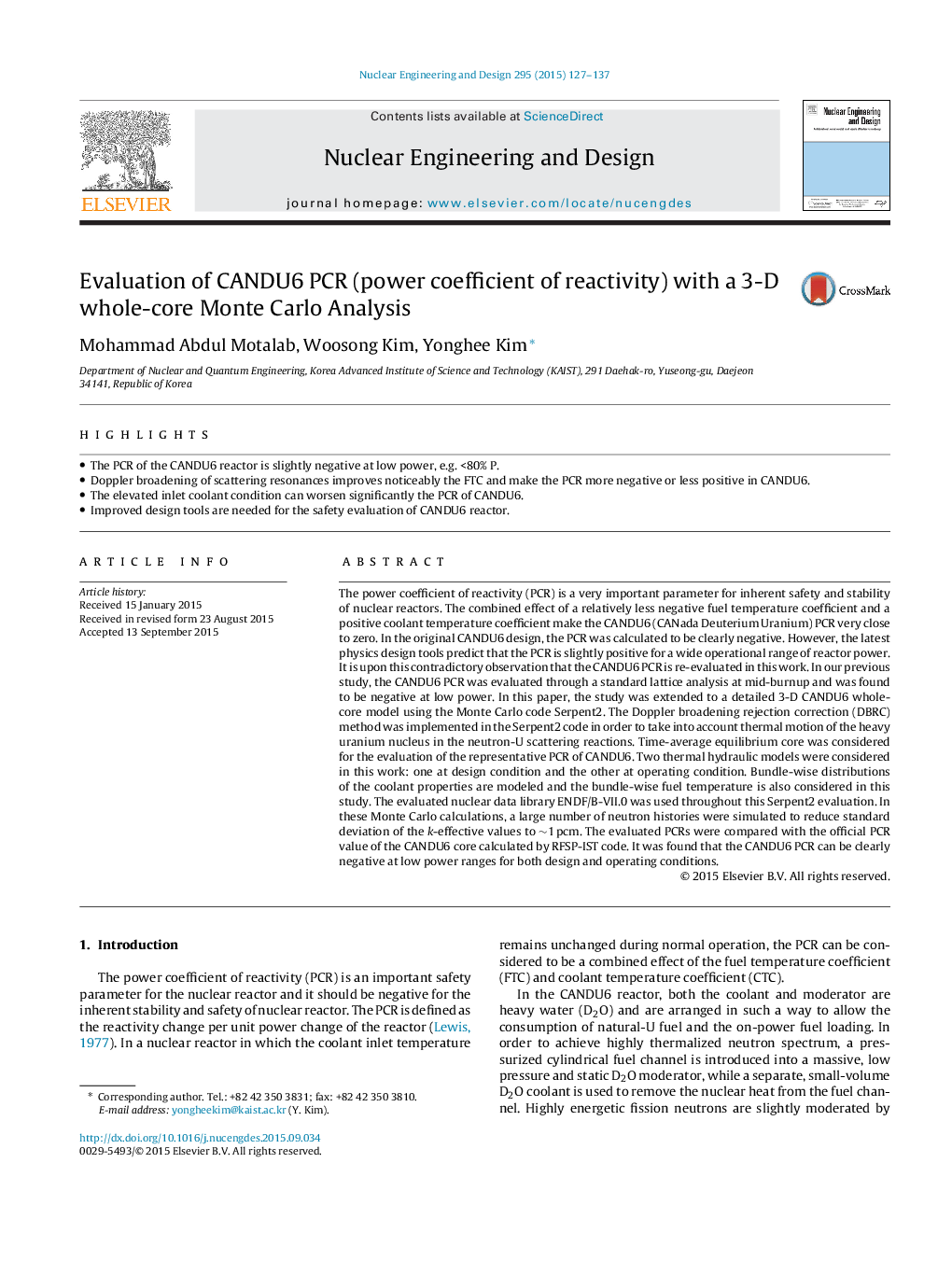| Article ID | Journal | Published Year | Pages | File Type |
|---|---|---|---|---|
| 6760582 | Nuclear Engineering and Design | 2015 | 11 Pages |
Abstract
The power coefficient of reactivity (PCR) is a very important parameter for inherent safety and stability of nuclear reactors. The combined effect of a relatively less negative fuel temperature coefficient and a positive coolant temperature coefficient make the CANDU6 (CANada Deuterium Uranium) PCR very close to zero. In the original CANDU6 design, the PCR was calculated to be clearly negative. However, the latest physics design tools predict that the PCR is slightly positive for a wide operational range of reactor power. It is upon this contradictory observation that the CANDU6 PCR is re-evaluated in this work. In our previous study, the CANDU6 PCR was evaluated through a standard lattice analysis at mid-burnup and was found to be negative at low power. In this paper, the study was extended to a detailed 3-D CANDU6 whole-core model using the Monte Carlo code Serpent2. The Doppler broadening rejection correction (DBRC) method was implemented in the Serpent2 code in order to take into account thermal motion of the heavy uranium nucleus in the neutron-U scattering reactions. Time-average equilibrium core was considered for the evaluation of the representative PCR of CANDU6. Two thermal hydraulic models were considered in this work: one at design condition and the other at operating condition. Bundle-wise distributions of the coolant properties are modeled and the bundle-wise fuel temperature is also considered in this study. The evaluated nuclear data library ENDF/B-VII.0 was used throughout this Serpent2 evaluation. In these Monte Carlo calculations, a large number of neutron histories were simulated to reduce standard deviation of the k-effective values to â¼1Â pcm. The evaluated PCRs were compared with the official PCR value of the CANDU6 core calculated by RFSP-IST code. It was found that the CANDU6 PCR can be clearly negative at low power ranges for both design and operating conditions.
Related Topics
Physical Sciences and Engineering
Energy
Energy Engineering and Power Technology
Authors
Mohammad Abdul Motalab, Woosong Kim, Yonghee Kim,
